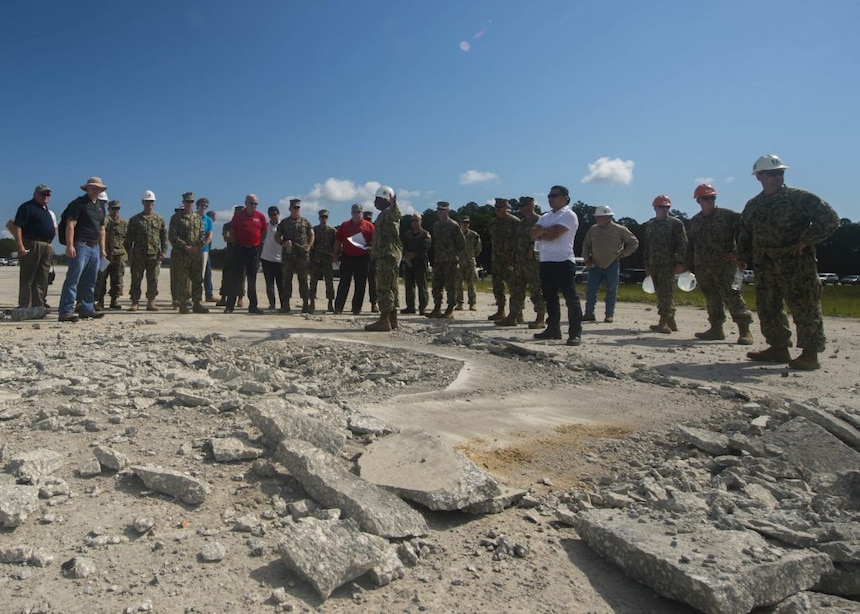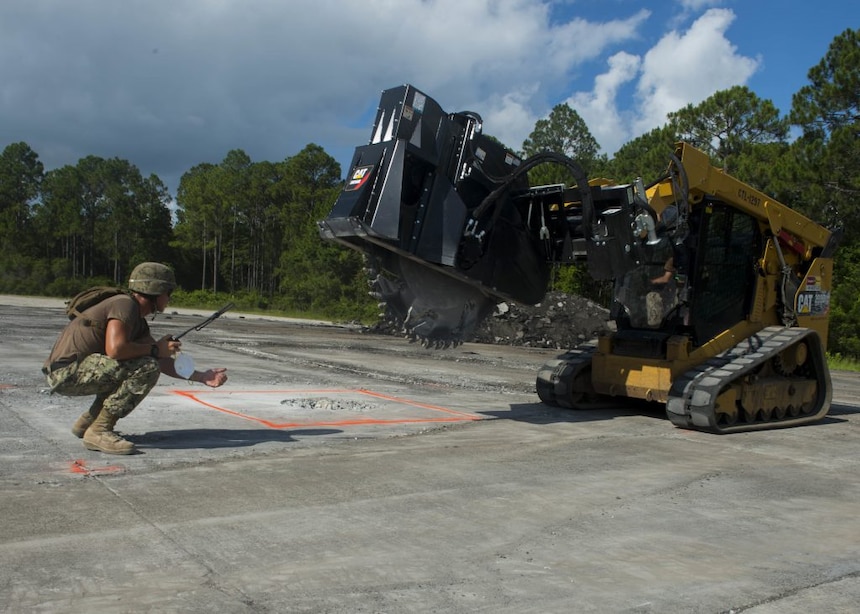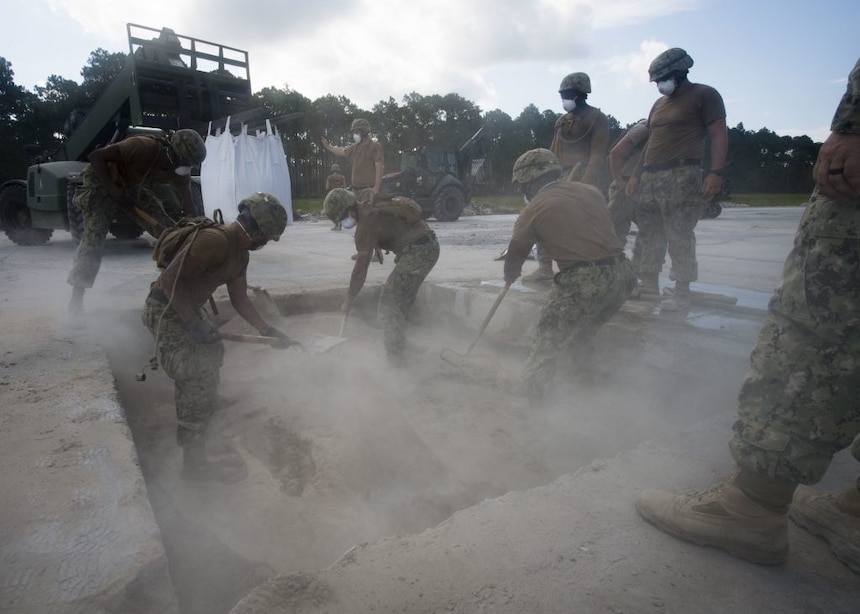NECC Seabees and EOD Technicians Conduct ADR Experiment
By ggranger, / Published July 10, 2018
Story by MC1 David Kolmel,Expeditionary Combat Camera
TYNDALL AIR FORCE BASE, Fla.- The experiment brought together Seabees from Naval Construction Group 2 and Naval Mobile Construction Battalion (NMCB) 1, explosive ordnance disposal (EOD) technicians from Explosive Ordnance Disposal Mobile Unit (EODMU) 12, and Navy Expeditionary Warfighting Development Center (EXWDC) personnel to validate recently updated doctrine and experiment with new technologies to increase ADR efficiency and safety.
[caption id="attachment_16858" align="alignnone" width="618"]
Chief Equipment Operator Evanthony Stevenson, assigned to Naval Construction Group 2, explains to visitors the methods used to repair a damaged runway during an airfield damage repair (ADR) experiment at Tyndall Air Force Base in Panama City, Florida. (Photo by MC1 David Kolmel)
Naval Postgraduate School and Georgia Tech Research Institute, sponsored by the Office of Naval Research, conducted experimentation with unmanned aerial systems (UAS) to conduct autonomous surveying, damage and unexploded ordnance detection, and mapping of the airfield. The goal of the research is to develop an end-to-end automated assessment tool utilizing swarming UAS technology to quickly collect and analyze data over a damaged runway without placing Sailors in harms way. Rutgers University demonstrated their efforts in expeditionary cement and concrete which utilizes indigenous material and less water, all in an effort to reduce the logistics requirements for ADR.
Exposing the researchers to real-world scenarios increased their awareness of ADR.
[caption id="attachment_16861" align="alignleft" width="222"]
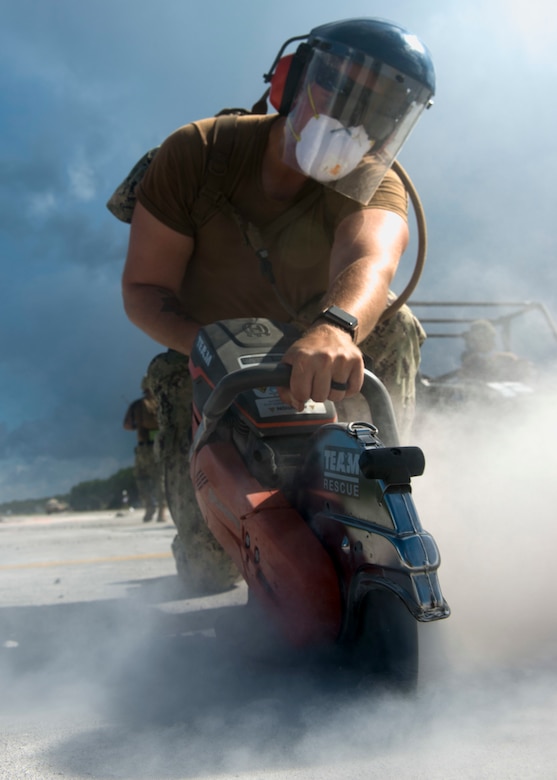
TYNDALL AIR FORCE BASE, Fla. (Jun. 28, 2018) A Seabee assigned to Naval Mobile Construction Battalion 1 uses a concrete saw to cut around a spall during an airfield damage repair (ADR) experiment at Tyndall Air Force Base in Panama City, Florida. Navy Expeditionary Combat Command conducted the experiment with Seabees, explosive ordnance disposal personnel and government sponsored researchers to validate current ADR methods and test new technologies aimed at increasing ADR safety and efficiency. (U.S. Navy Photo by Mass Communication Specialist 1st Class David Kolmel)
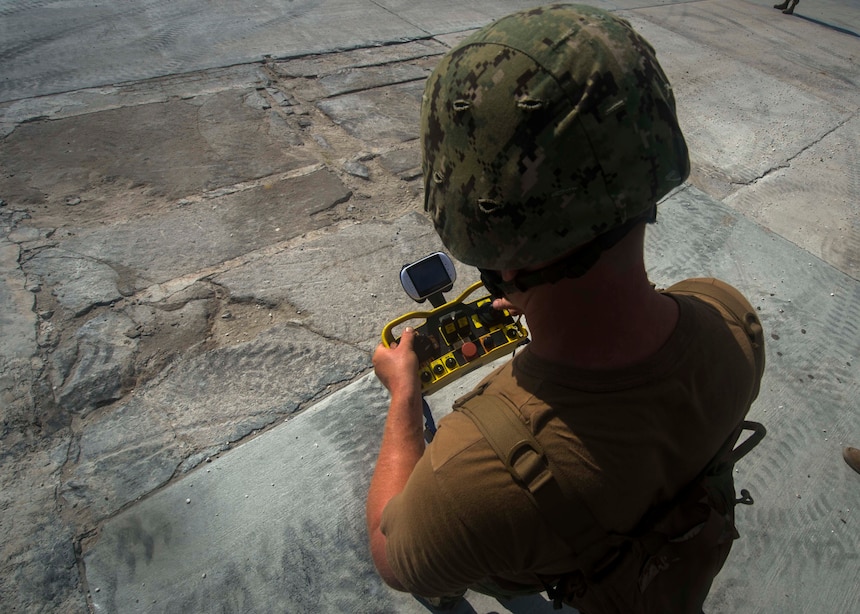
TYNDALL AIR FORCE BASE, Fla. (Jun. 26, 2018) Equipment Operator 2nd Class Benjamin Austin, assigned to Naval Mobile Construction Battalion 1, drives a remote-operated forklift during an airfield damage repair (ADR) experiment at Tyndall Air Force Base in Panama City, Florida. Navy Expeditionary Combat Command conducted the experiment with Seabees, explosive ordnance disposal personnel and government sponsored researchers to validate current ADR methods and test new technologies aimed at increasing ADR safety and efficiency. (U.S. Navy Photo by Mass Communication Specialist 1st Class David Kolmel)
